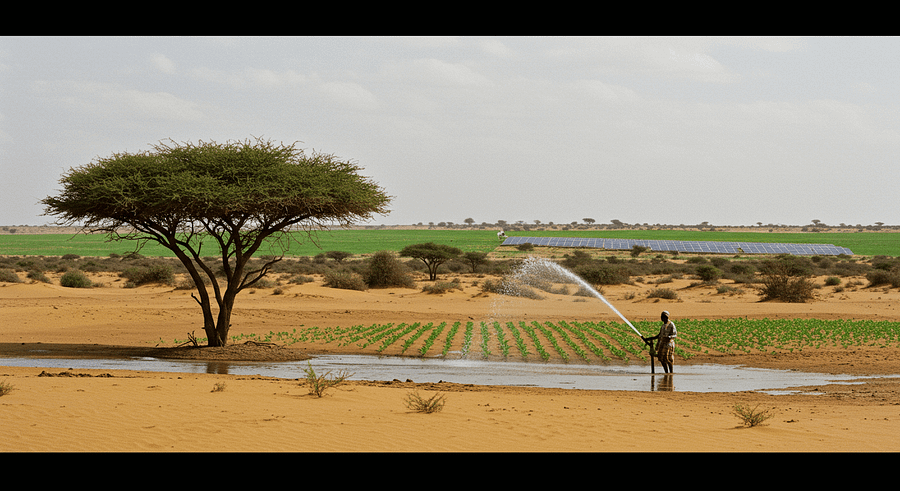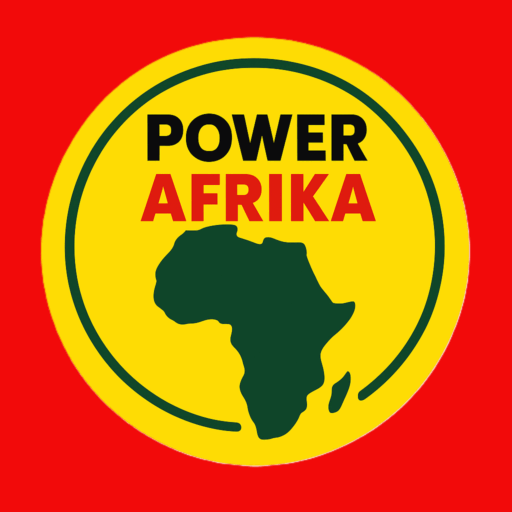
Picture a massive, living shield stretching across Africa—11 countries wide, 8,000 kilometers long, and 15 kilometers thick. That’s the Great Green Wall, an audacious plan to fight desertification, poverty, and climate chaos in the Sahel, a semi-arid belt hugging the Sahara’s southern edge. Launched in 2007 by the African Union (AU), it’s not a literal wall but a mosaic of trees, grasslands, and sustainable projects from Senegal in the west to Djibouti in the east. Think of it as Africa’s green backbone—restoring land, feeding communities, and proving the continent can tackle its toughest challenges with grit and green thumbs. At PowerAfrika, we’re all about this kind of bold reconstruction—let’s break it down!
The Nuts and Bolts
The Green Wall targets the Sahel, where the Sahara’s been creeping south, swallowing farmland and spitting out dust. By 2025, it’s made serious strides—15% complete, with 20 million hectares reforested (that’s twice Belgium’s size!). Senegal’s planted 11 million trees, Ethiopia’s restored 5.5 million hectares, and Nigeria’s chipped in 2 million. The goal? 100 million hectares by 2030, sucking up 250 million tons of CO2 and creating 10 million jobs. It’s not just tree-hugging—farmers use agroforestry (trees + crops), solar-powered irrigation pumps like this water pump, and windbreaks to shield crops from sandstorms. Funding’s a patchwork—$19 billion pledged in 2021 by the UN, World Bank, and EU, with $4.3 billion spent by ‘25.
The Sahel’s brutal: 80% of its 400 million people scrape by on less than $2 a day, and climate change amps up droughts and floods. The Green Wall fights back—acacia trees fix nitrogen in soil, baobabs store water, and grasses hold dunes in check. X posts (like @SahelGreen) buzz about locals harvesting gum arabic or honey, turning barren land into cash. It’s a slow grind—only 4% done by 2019—but 2025’s progress shows Africa’s got the muscle to pull this off.
PowerAfrika’s Opinion
At PowerAfrika, we’re quietly cheering this green hustle. It’s reconstruction in real-time—mentally (hope over despair), spiritually (nature and people in sync), economically (jobs from dirt), and physically (land reborn). We’d nudge more tech into the mix—why not outfit herders with a solar charger to power their lives off-grid? This isn’t just about trees; it’s a blueprint for Africa to flex its resilience. PowerAfrika wants powerafrika.com to be where farmers, scientists, and poets swap ideas on scaling this beast—because the Sahel’s win is the continent’s glow.
Linking It Up
This ties into our affiliate crew—tools to amplify the Green Wall’s tale. Want a video of Senegal’s tree lines swaying? Renderlion whips up AI clips that slap on X. Need a reel of a farmer planting acacia? AiReelGenerator delivers. Pair it with a mosquito repellent for Sahel nights or a water pump for dry spells—tangible wins. It vibes with our Kotoka Airport petition—both reclaim Africa’s narrative. Deepen your know-how with MBL—learning fuels the fight.
The Bigger Picture
Imagine a green ribbon across Africa—dust turns to fields, kids eat from orchards, and nomads trade under shade. The Green Wall’s mental boost is massive—proof Africa can outsmart climate doom. Spiritually, it’s unity—11 nations planting as one. Economically, it’s gold—jobs, food, trade. Physically, it’s earth healed. Psychologically, it’s pride—Sahelians saying, “We’ve got this.” PowerAfrika sees a forum where minds clash: How do we hit 2030? A solar charger here, a water pump there—small gears in a big machine.
Facts You Didn’t Know
- The Sahel’s baobab trees can live 2,000 years—one in Senegal’s got a hollow trunk folks used as a jail!
- Ethiopia’s Green Wall chunk restored land that once lost 1.5 billion tons of topsoil yearly—enough to bury Manhattan.
- Senegal’s acacias bloom pink—bees love ‘em, and their honey’s a $5 million side hustle.
